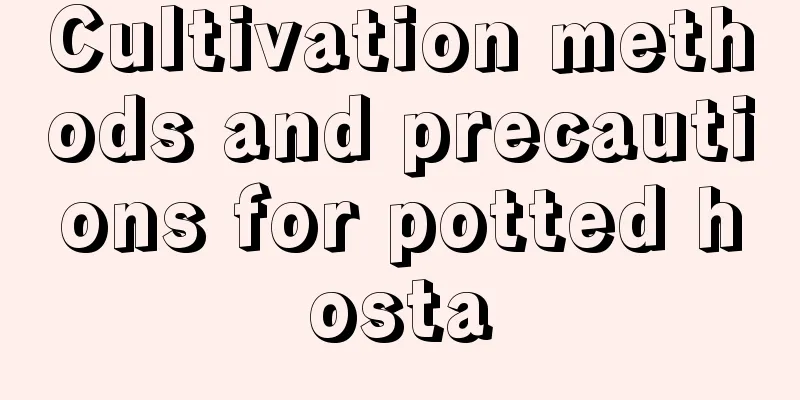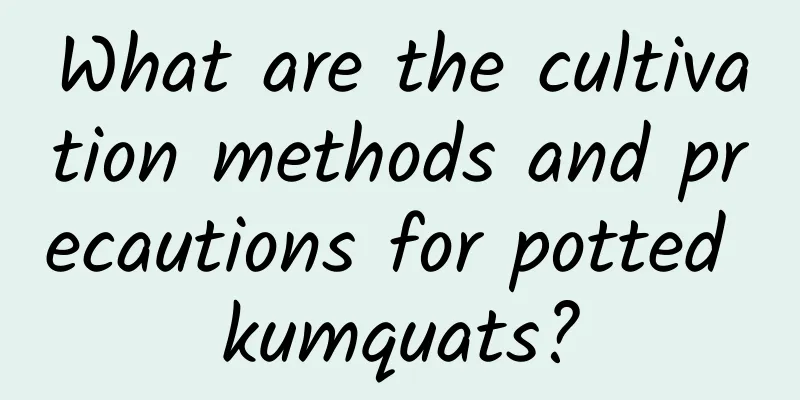Cultivation methods and precautions for potted hosta

1. Maintenance methods1. Soil: Fertile and water-conserving soil is suitable for growing hosta, and sandy loam is the most appropriate choice. Sandy loam is very suitable for the growth needs of hosta, allowing it to grow better. 2. Water: Hosta likes a humid environment, and frequent watering can make it grow better. But don't let water accumulate in the pot. Just keep the soil slightly moist at ordinary times. 3. Nutrients: There is not much demand for fertilizer during the seedling stage, and it is sufficient to apply fertilizer once every half a month or so. When entering the flowering period, the demand for fertilizer gradually increases. It is sufficient to apply fertilizer once every seven days or so, and you can choose organic fertilizer. 4. Light: It likes to grow in a slightly shaded environment. It is best to give it appropriate diffuse light. It is not suitable for direct sunlight, which will cause damage to the leaves. 2. Breeding techniques1. Pruning: After cultivating it for a period of time, you should loosen the soil and trim its withered branches and leaves to allow it to be ventilated and light-permeable so that it can grow better. 2. Reproduction: Generally, the method of division is adopted, and the time is between March and April. First, dig out the old plant and dry it in the sun, then apply some charcoal powder on the cut and plant it. Now you can wait for it to sprout new leaves. 3. Problem diagnosis and treatment1. Spot disease: Spot disease is very harmful to the leaves. In severe cases, it will cause the entire leaf to wither and turn yellow. The prevention and control method is to spray diluted benomyl once a week, and the problem will be solved after about three times. 2. White rot: A common disease of potted hosta is white rot, which will directly damage its roots and cause rot. It can be treated by spraying diluted dichlorodiphenyltrichloroethane. IV. Other issues1. How to survive the winter: It is a very cold-resistant plant and will hibernate in winter. At this time, you just need to keep the temperature no lower than five degrees Celsius. 2. Whether it can be exposed to rain: Potted hosta cannot be exposed to rain. On rainy days, they should be placed in a ventilated place indoors to avoid rain. Rainwater stored in the pot will cause its roots to rot, affecting its normal growth. |
<<: Cultivation methods and precautions of Ligustrum lucidum
>>: Breeding methods and precautions of Thousand Rabbit Ears
Recommend
How to grow butterfly plum, what to do when the leaves turn yellow
1. Breeding methods 1. Sunlight: It needs sunligh...
Forsythia suspensa pests and diseases and their control methods
Diseases and prevention methods of Forsythia susp...
Rose cutting method in June
Rose is a common flower . It has beautiful flower...
Ginkgo tree growth environment and local conditions
Ginkgo Tree Growth Environment and Conditions Gin...
How to propagate red sorrel and what to pay attention to
How to propagate Oxalis serrata The reproduction ...
How to take care of the Phalaenopsis you bought home during the Chinese New Year
temperature Phalaenopsis is native to the tropics...
Where are the best walnuts and where are the best quality walnuts?
Walnuts are familiar nuts. They are not only deli...
Do this to the Clivia after the flowers have faded, otherwise it will never bloom again
Pruning after flowering (Author: Hongweismile Sou...
Smooth sailing cultivation method and watering
Smooth Sailing , commonly known as white palm, wi...
The advantages and disadvantages of blue moonstone roses. How about blue moonstone? Is it worth buying?
For flower lovers, rose is an easy-to-cultivate p...
Methods and precautions for hydroponic cultivation of pink palm How to maintain hydroponic pink palm
The pink anthurium is very unique with brightly c...
Is it okay to put a lucky tree in the living room?
Is the lucky tree suitable for indoor cultivation...
How to deal with lilies not blooming
1. Choose large bulbs 1. Reason: Usually the qual...
Does Panax notoginseng prefer shade or sun?
Does Panax notoginseng prefer shade or sun? Notog...
When is the best time to transplant chives?
Chives are more suitable for growing in loose soi...









